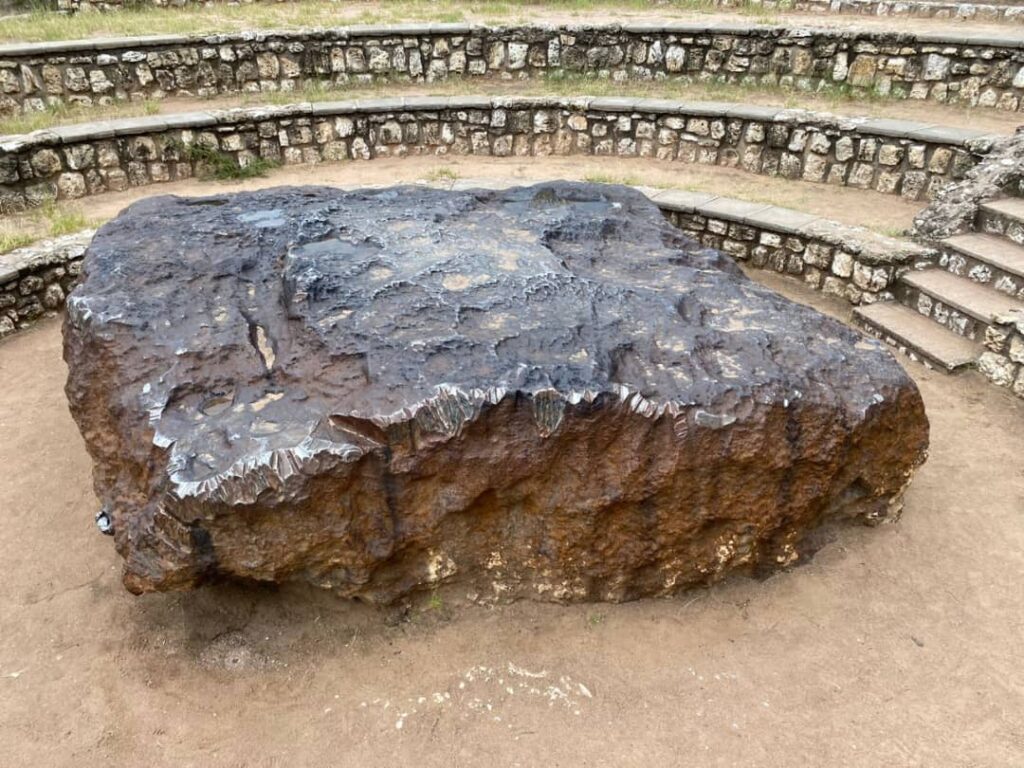The Hoba (/ˈhoʊbə/ HOH-bə) meteorite, was discovered in 1920 on a farm named Hoba West, near Grootfontein in Namibia. It remains at its original landing site and is protected as a national monument.
Size and Weight
The Hoba meteorite is the largest known single-piece meteorite and the most massive naturally occurring piece of iron known on Earth’s surface. It weighs approximately 60 tonnes (around 66 short tons).
The meteorite is composed primarily of iron (about 84%) and nickel (about 16%), with trace amounts of cobalt and other metals. This makes it an iron meteorite, specifically classified as an ataxite due to its high nickel content and lack of Widmanstätten patterns.

Age and Origin
It’s estimated to have fallen to Earth around 80,000 years ago. The exact origin of the meteorite is unknown, but it likely came from the asteroid belt between Mars and Jupiter.
The Hoba meteorite is unusual because it did not create a significant crater upon impact. This has led scientists to theorize that it may have entered the Earth’s atmosphere at a relatively low speed and shallow angle, allowing it to land relatively gently.
Scientific and Cultural Significance
The meteorite is an important object of study for scientists interested in the composition and characteristics of celestial bodies. It’s also a significant cultural and tourist attraction in Namibia.
Source: wikipedia


